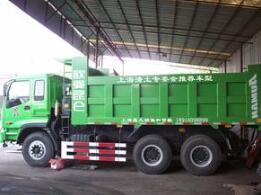AlexNet是2012年ImageNet比赛的冠军,虽然过去了很长时间,但是作为深度学习中的经典模型,AlexNet不但有助于我们理解其中所使用的很多技巧,而且非常有助于提升我们使用深度学习工具箱的熟练度。尤其是我刚入门深度学习,迫切需要一个能让自己熟悉tensorflow的小练习,于是就有了这个小玩意儿......
先放上我的代码:https://github.com/hjptriplebee/AlexNet_with_tensorflow
如果想运行代码,详细的配置要求都在上面链接的readme文件中了。本文建立在一定的tensorflow基础上,不会对太细的点进行说明。
模型结构

关于模型结构网上的文献很多,我这里不赘述,一会儿都在代码里解释。
有一点需要注意,AlexNet将网络分成了上下两个部分,在论文中两部分结构完全相同,唯一不同的是他们放在不同GPU上训练,因为每一层的feature map之间都是独立的(除了全连接层),所以这相当于是提升训练速度的一种方法。很多AlexNet的复现都将上下两部分合并了,因为他们都是在单个GPU上运行的。虽然我也是在单个GPU上运行,但是我还是很想将最原始的网络结构还原出来,所以我的代码里也是分开的。
模型定义
|
1
2
3
4
5
6
7
8
9
10
11
12
13
14
15
16
17
18
19
20
21
22
23
24
25
26
27
28
29
30
31
32
33
34
35
36
37
38
39
40
41
42
|
def maxPoolLayer(x, kHeight, kWidth, strideX, strideY, name, padding = "SAME"): """max-pooling""" return tf.nn.max_pool(x, ksize = [1, kHeight, kWidth, 1], strides = [1, strideX, strideY, 1], padding = padding, name = name) def dropout(x, keepPro, name = None): """dropout""" return tf.nn.dropout(x, keepPro, name) def LRN(x, R, alpha, beta, name = None, bias = 1.0): """LRN""" return tf.nn.local_response_normalization(x, depth_radius = R, alpha = alpha, beta = beta, bias = bias, name = name) def fcLayer(x, inputD, outputD, reluFlag, name): """fully-connect""" with tf.variable_scope(name) as scope: w = tf.get_variable("w", shape = [inputD, outputD], dtype = "float") b = tf.get_variable("b", [outputD], dtype = "float") out = tf.nn.xw_plus_b(x, w, b, name = scope.name) if reluFlag: return tf.nn.relu(out) else: return out def convLayer(x, kHeight, kWidth, strideX, strideY, featureNum, name, padding = "SAME", groups = 1):#group为2时等于AlexNet中分上下两部分 """convlutional""" channel = int(x.get_shape()[-1])#获取channel conv = lambda a, b: tf.nn.conv2d(a, b, strides = [1, strideY, strideX, 1], padding = padding)#定义卷积的匿名函数 with tf.variable_scope(name) as scope: w = tf.get_variable("w", shape = [kHeight, kWidth, channel/groups, featureNum]) b = tf.get_variable("b", shape = [featureNum]) xNew = tf.split(value = x, num_or_size_splits = groups, axis = 3)#划分后的输入和权重 wNew = tf.split(value = w, num_or_size_splits = groups, axis = 3) featureMap = [conv(t1, t2) for t1, t2 in zip(xNew, wNew)] #分别提取feature map mergeFeatureMap = tf.concat(axis = 3, values = featureMap) #feature map整合 # print mergeFeatureMap.shape out = tf.nn.bias_add(mergeFeatureMap, b) return tf.nn.relu(tf.reshape(out, mergeFeatureMap.get_shape().as_list()), name = scope.name) #relu后的结果 |
定义了卷积、pooling、LRN、dropout、全连接五个模块,其中卷积模块因为将网络的上下两部分分开了,所以比较复杂。接下来定义AlexNet。
|
1
2
3
4
5
6
7
8
9
10
11
12
13
14
15
16
17
18
19
20
21
22
23
24
25
26
27
28
29
30
31
32
33
34
35
36
37
38
39
40
41
42
43
44
45
46
47
48
49
50
51
|
class alexNet(object): """alexNet model""" def __init__(self, x, keepPro, classNum, skip, modelPath = "bvlc_alexnet.npy"): self.X = x self.KEEPPRO = keepPro self.CLASSNUM = classNum self.SKIP = skip self.MODELPATH = modelPath #build CNN self.buildCNN() def buildCNN(self): """build model""" conv1 = convLayer(self.X, 11, 11, 4, 4, 96, "conv1", "VALID") pool1 = maxPoolLayer(conv1, 3, 3, 2, 2, "pool1", "VALID") lrn1 = LRN(pool1, 2, 2e-05, 0.75, "norm1") conv2 = convLayer(lrn1, 5, 5, 1, 1, 256, "conv2", groups = 2) pool2 = maxPoolLayer(conv2, 3, 3, 2, 2, "pool2", "VALID") lrn2 = LRN(pool2, 2, 2e-05, 0.75, "lrn2") conv3 = convLayer(lrn2, 3, 3, 1, 1, 384, "conv3") conv4 = convLayer(conv3, 3, 3, 1, 1, 384, "conv4", groups = 2) conv5 = convLayer(conv4, 3, 3, 1, 1, 256, "conv5", groups = 2) pool5 = maxPoolLayer(conv5, 3, 3, 2, 2, "pool5", "VALID") fcIn = tf.reshape(pool5, [-1, 256 * 6 * 6]) fc1 = fcLayer(fcIn, 256 * 6 * 6, 4096, True, "fc6") dropout1 = dropout(fc1, self.KEEPPRO) fc2 = fcLayer(dropout1, 4096, 4096, True, "fc7") dropout2 = dropout(fc2, self.KEEPPRO) self.fc3 = fcLayer(dropout2, 4096, self.CLASSNUM, True, "fc8") def loadModel(self, sess): """load model""" wDict = np.load(self.MODELPATH, encoding = "bytes").item() #for layers in model for name in wDict: if name not in self.SKIP: with tf.variable_scope(name, reuse = True): for p in wDict[name]: if len(p.shape) == 1: #bias 只有一维 sess.run(tf.get_variable('b', trainable = False).assign(p)) else: #weights sess.run(tf.get_variable('w', trainable = False).assign(p)) |
buildCNN函数完全按照alexnet的结构搭建网络。
loadModel函数从模型文件中读取参数,采用的模型文件见github上的readme说明。
至此,我们定义了完整的模型,下面开始测试模型。
模型测试
ImageNet训练的AlexNet有很多类,几乎包含所有常见的物体,因此我们随便从网上找几张图片测试。比如我直接用了之前做项目的渣土车图片:

然后编写测试代码:
|
1
2
3
4
5
6
7
8
9
10
11
12
13
14
15
16
17
18
19
20
21
22
23
24
25
26
27
28
29
30
31
32
33
|
#some params dropoutPro = 1classNum = 1000skip = [] #get testImage testPath = "testModel"testImg = [] for f in os.listdir(testPath): testImg.append(cv2.imread(testPath + "/" + f)) imgMean = np.array([104, 117, 124], np.float) x = tf.placeholder("float", [1, 227, 227, 3]) model = alexnet.alexNet(x, dropoutPro, classNum, skip) score = model.fc3 softmax = tf.nn.softmax(score) with tf.Session() as sess: sess.run(tf.global_variables_initializer()) model.loadModel(sess) #加载模型 for i, img in enumerate(testImg): #img preprocess test = cv2.resize(img.astype(np.float), (227, 227)) #resize成网络输入大小 test -= imgMean #去均值 test = test.reshape((1, 227, 227, 3)) #拉成tensor maxx = np.argmax(sess.run(softmax, feed_dict = {x: test})) res = caffe_classes.class_names[maxx] #取概率最大类的下标 #print(res) font = cv2.FONT_HERSHEY_SIMPLEX cv2.putText(img, res, (int(img.shape[0]/3), int(img.shape[1]/3)), font, 1, (0, 255, 0), 2)#绘制类的名字 cv2.imshow("demo", img) cv2.waitKey(5000) #显示5秒 |
如上代码所示,首先需要设置一些参数,然后读取指定路径下的测试图像,再对模型做一个初始化,最后是真正测试代码。测试结果如下:

以上就是本文的全部内容,希望对大家的学习有所帮助,也希望大家多多支持服务器之家。
原文链接:http://blog.csdn.net/accepthjp/article/details/69999309










